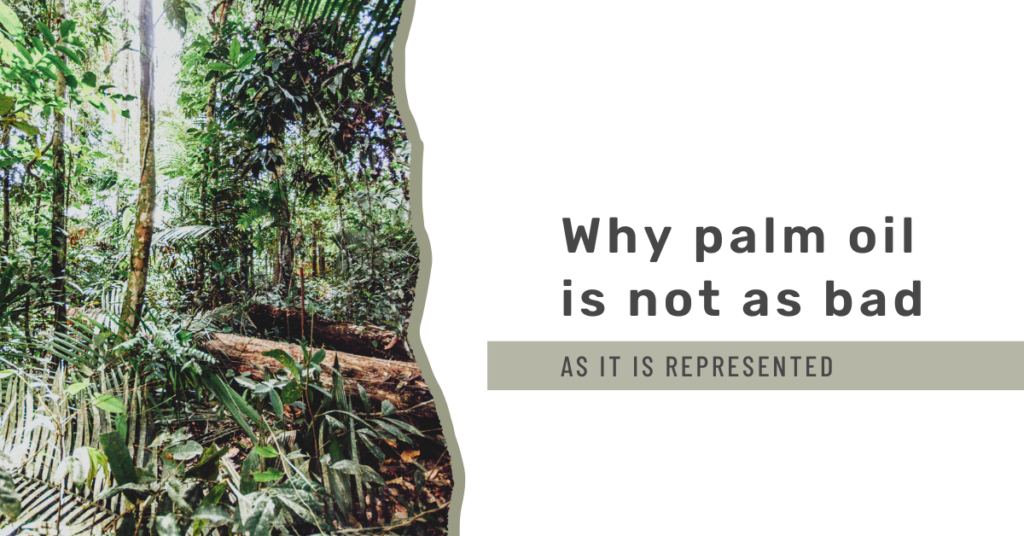This marks the beginning of an exciting blog series dedicated to the fascinating tropics and tropical forests, an introduction to the tropics, which are renowned for their lush greenery and astounding biodiversity. In this initial instalment of the series, we’ll keep things fundamental. We’ll explore what the tropics are, what defines them, and the various ecosystems they encompass. As we progress through the series. We’ll delve into topics like the origin and evolution of tropical ecosystems, the reasons behind their remarkable biodiversity, regional variations, and the impact of human activities on these precious environments. Stay tuned for more insights into the captivating world of the tropics!
To set the stage, let’s kick off with some intriguing facts that underscore the immense biodiversity found in these regions. In an Ecuadorian forest, you can encounter a staggering 473 tree species per hectare. While just 0.1 hectares in Ecuador hosts 365 vascular plant species. One tree species, Luehea seemannii, sheltered an astonishing 955 beetle species. And a mere 15 square kilometres in Costa Rica’s La Selva Reserve is home to a whopping 4000 moth species.
Introduction to the Tropics
The term “tropics” is often used in a broad sense to describe a tropical climate characterized by warm to hot and moist conditions throughout the year. Typically associated with lush vegetation. However, the term “the tropics” refers specifically to the geographic region situated between the Tropics of Cancer (at 23.5°N latitude) and the Tropics of Capricorn (at 23.5°S latitude). This expansive region covers 36% of the Earth’s surface. Comprising 20% of the ocean’s surface and 42% of the land surface. Although one might hope for much of this area to be covered in tropical forests. In reality, only 6 to 7% of the Earth’s surface falls within the tropical forest zone.
The tropics stand apart from other climatic and biotic regions of the Earth. Such as the middle latitudes and polar regions that lie on either side of the equatorial zone. This unique region is characterized by its distinctive climate, ecosystems, and remarkable biodiversity. Making it a subject of great fascination and importance in the study of Earth’s natural environments.


What shapes the tropics?
The tropics are shaped by four primary factors: (1) the shape and tilt of the Earth, (2) climate, (3) geography, and (4) anthropogenic activities. Each of these factors contributes to the unique characteristics of the tropical region.
Firstly, the shape and tilt of the Earth play a crucial role. The Earth is tilted on its axis, and this tilt causes the Sun to be directly overhead the equator at certain times of the year. This results in the tropics experiencing more direct and intense sunlight compared to temperate regions. Consequently, the tropics are characterized by higher temperatures. With mean temperatures consistently above 18°C, and the absence of a distinct cold season.
The second factor, climate, is influenced by the tropics’ position relative to the equator. The tropical climate is known for its warmth, humidity, and regular rainfall throughout the year. This climate pattern supports the growth of lush vegetation and contributes to the region’s high biodiversity. Geography is another key factor shaping the tropics. The geography of the tropical region includes diverse ecosystems, such as rainforests, savannas, wetlands, and coral reefs. The unique combination of landforms, soils, and water bodies in the tropics creates a wide range of habitats for various species.
Lastly, anthropogenic activities, or human activities, have a significant impact on the tropics. Deforestation, habitat destruction, agriculture, and other human-induced changes to the environment have led to both challenges and opportunities for conservation efforts in this region. Together, these four factors interact to create the complex and biologically rich tropical ecosystems that are essential to Earth’s biodiversity and environmental health.
The climate of the tropics
The tropics encompass a wide range of ecosystems, from lush rainforests to expansive savannahs, and everything in between. The diversity of the tropical region is reflected in the varying levels of precipitation it receives. Which can range from up to 4 meters of rainfall in some areas to regions with minimal monthly precipitation and distinct dry seasons.
To categorize these climatic differences, the Köppen climate classification system is often used. This classification divides the tropics into three main regions based on their precipitation patterns:
- Af – Tropical Rainforest Climate: In this region, precipitation occurs in every month of the year, with a minimum threshold of at least 60 mm per month. However, many areas receive double or triple this amount of rainfall. Notably, the tropical rainforest climate does not have distinct seasons in terms of temperature or moisture changes.
- Am – Tropical Monsoon Climate: The tropical monsoon climate experiences seasonal variation in precipitation. There are months with less than 60 mm of rainfall, particularly during the dry-winter season.
- Aw/s – Savanna Climate: This climate category includes regions with a pronounced dry season. Often characterized by severe drought conditions throughout the year. The “Aw” subtype represents a tropical savanna climate with dry-winter characteristics. While the “As” subtype indicates a tropical savanna climate with dry-summer characteristics.
Each of these climate regions supports unique ecosystems and habitats, contributing to the extraordinary biodiversity found in the tropics. In future sections of this blog series, we’ll explore the specific ecosystems and the remarkable species that thrive in these diverse tropical environments.
Geography
The topography of a region plays a significant role in shaping its weather patterns. Topographical features such as mountains, rivers, and urban areas can impact weather by influencing the movement of air masses. Mountains, in particular, have a pronounced effect on weather because they alter the path of air currents.
For instance, when moist air encounters a mountain range, it is forced to ascend. As it rises, the air cools, and the moisture within it condenses, leading to precipitation in the form of rain or snow. This phenomenon is why the windward side of a mountain range. Typically the side facing the ocean often receives more rainfall. In contrast, the leeward side, or rain shadow, experiences drier conditions as the descending air has already released much of its moisture.
Moreover, an area’s latitude, its location in terms of north and south on the Earth’s surface, also exerts a crucial influence on its weather. Latitude determines the angle at which sunlight strikes the Earth’s surface, affecting the amount of solar energy received. This variance in solar energy contributes to variations in temperature and climate across different latitudinal regions, influencing weather patterns and climate characteristics.
Together, topography and latitude are essential factors in understanding and predicting regional weather patterns and climate variations. They help explain why areas with similar latitudinal positions can experience significantly different weather conditions based on their local topographical features.
Anthropogenic activity
The influence of human activities in tropical regions is predominantly negative. Often resulting in the removal of rainforests where they would naturally exist. While I won’t delve into the specifics at this moment. I will address this topic in more detail in a future instalment of this series, an introduction to the tropics, which will focus on the impact of human activities on tropical forests. Stay tuned for a comprehensive exploration of the challenges posed by deforestation, habitat destruction, and other anthropogenic factors in these vital ecosystems.
The Intertropical Convergence Zone (ITCV)
In the heart of tropical forests, a remarkable dance unfolds in the skies. It all begins with the relentless heat of the sun, which warms the Earth’s surface and, in turn, the air close to the ground. This heated air, lighter and buoyant, seizes the opportunity to ascend, rising gracefully into the atmosphere. As it climbs, this ascending air begins to cool. The cooling process is essential, for it triggers a magical transformation. The air, now ascending and cooling, reaches a point where it can no longer contain the copious moisture it holds. Here, among the clouds, a remarkable metamorphosis takes place.
The excess moisture in the air forms delicate, billowing clouds that stretch across the tropical sky. Within these clouds, countless tiny water droplets form, clustering together like a congregation of nature’s gems. These droplets, born from the very essence of the humid air, grow and merge until they become heavy enough to defy gravity. With their newfound weight, the water droplets descend from the heavens, falling gently upon the lush canopy below. This celestial gift, nourishing and life-sustaining, is none other than the much-awaited rainfall.
Yet, this meteorological ballet is not a solitary act. Nature orchestrates it with precision and continuity. As the warm air rises, creating a void below, surrounding air masses eagerly rush in to replace it. This continuous cycle ensures that the intricate dance of atmospheric ascent, cloud formation, and rainfall remains an ongoing and ever-repeating spectacle.



Seasonality of the ITCV
The heart of this meteorological performance lies in the Intertropical Convergence Zone (ITCZ). It’s within this shifting zone that the ascending and converging air masses meet, giving rise to the life-sustaining rains. However, the ITCZ isn’t fixed; it’s a wandering wanderer, shifting its position as the seasons change.
During the northern summer, it embarks on a northward journey, and as autumn arrives, it gracefully waltzes southward. This dynamic seasonal movement of the ITCZ paints the canvas of tropical regions with distinct rainy seasons. And so, over tropical forests, this captivating meteorological ballet plays out. Nourishing the vibrant and diverse ecosystems that call these regions home. Each droplet of rain is a testament to the intricate choreography of nature. Sustaining life in these lush and thriving realms.
Ecosystems of the tropics
In our exploration of the tropics, we’ve discovered a region where nature’s artistry takes on diverse forms. The tropics, encompassing roughly 36% of the Earth’s surface, reveal their intricate tapestry through a convergence of factors that shape both climate and ecosystems. Within this expansive domain, we discern three primary climatic zones and four major ecosystem categories. (1) Tropical Rainforest, (2) Seasonal Tropical Forest, (3) Dry Forests, and (4) Tropical Grasslands, Shrublands, and Savannas.
The central determinant of these ecosystems, much like the climate itself, is the precious gift of precipitation. It’s a gradient, a transition from abundance to aridity that moulds the landscapes and habitats across the tropics. While our focus now narrows to the enchanting realm of the Tropical Rainforest and the intriguing Seasonal Tropical Forest. it’s essential to recognize that each of these ecosystems possesses its unique character, intricacies, and inhabitants. Together, they paint a vivid portrait of the extraordinary biodiversity that thrives beneath the tropical canopy.
Tropical rainforest
Tropical rainforests are the epitome of biodiversity, teeming with life and boasting remarkable species endemism. These lush and evergreen forests, often referred to as “mega thermal” forests due to their frost-free nature, create a haven where biodiversity thrives. With monthly temperatures ranging between 26°C and 27°C, an average humidity level of 80%, and an annual precipitation of over 2000mm, they are a world of their own. Yet, even within this enchanting realm, diversity continues to flourish.
Rainforests are not uniform; they embrace diversity within their depths. You’ll encounter distinct varieties such as lowland rainforests, montane rainforests, freshwater swamp forests, heath forests, peat swamp forests, and unique mangroves. These habitats represent nature’s kaleidoscope, each with its own unique communities of plants and animals finely tuned to their specific environment.
The vertical organization of rainforests is a sight to behold, with distinct layers from the forest floor to the towering canopy. Each layer hosts its own unique array of life forms, impeccably adapted to their vertical niche. While the first three layers—forest floor, understory, and canopy—are common to various types of forests, the emergent layer is a crown jewel exclusive to tropical rainforests. Here, a select few giant trees soar to astonishing heights, some reaching a staggering 60 meters, creating a majestic spectacle above the dense forest canopy.




Seasonal tropical forest
Seasonal tropical forests, in contrast to their evergreen counterparts, experience a unique climatic rhythm. While they receive substantial total precipitation over the year, they also endure a distinct dry season, setting them apart from the consistent rain of tropical rainforests. Within these dynamic ecosystems, you’ll encounter a diverse assembly of tree species. Interestingly, not all of these trees shed their leaves during the dry season, creating a mosaic of green and deciduous foliage.
Although the clear layering characteristic of rainforests may be less pronounced in these mixed forests, they often bear the signature of numerous lianas. Lianas, with their growth advantage during the dry season, entwine the trees, adding a unique dimension to these woodlands. Located in close proximity to tropical rainforests, some areas may show minimal visual and climatic differences. However, seasonal tropical forests can exhibit slightly higher temperatures and lower humidity levels, reflecting the intermittent nature of their wet and dry seasons.
Dry Forests
Dry forests are a study in resilience, adapting to the challenges of seasonal precipitation. These ecosystems, while still rich in biodiversity, have learned to thrive amidst distinct wet and dry seasons. In contrast to the evergreen canopy of tropical rainforests, many trees in dry forests shed their leaves during prolonged dry spells. Creating a striking visual shift from lush green to deciduous brown.
Within these ecosystems, you’ll find a wide range of flora and fauna, uniquely suited to the ebb and flow of water availability. While the layering of vegetation may be less pronounced than in rainforests. Dry forests often host an array of drought-resistant plant species. The dry season can pose challenges. But it’s also a time when certain wildlife, like migratory birds, might make seasonal appearances.
Tropical Grasslands, Shrublands, and Savannas
Tropical grasslands, shrublands, and savannas are landscapes defined by their openness and unique blend of grasses, shrubs, and scattered trees. Unlike the dense forests seen in other tropical ecosystems, these regions embrace a more spacious and patchy terrain. They are characterized by alternating wet and dry seasons, which influence the vegetation patterns and wildlife activities.
This mosaic-like environment supports a fascinating mix of herbivores and carnivores. Grazers like zebras and antelopes roam the open grasslands. While predators like lions and cheetahs take advantage of the abundant prey. The absence of a continuous canopy allows for an intricate dance between sunlight and shadow. Creating a diverse array of microhabitats.
Tropical grasslands, shrublands, and savannas demonstrate the remarkable adaptability of life in the tropics. Where survival hinges on resourcefulness and the ability to thrive in a climate of seasonal extremes.
Want to support my work?
I spend a lot of time keeping this website filled with educational content and keeping updates about what I do to achieve my dream of working and living in Africa. Do you want to support me? You can buy me a coffee or purchase one of my digital prints. All proceeds will go towards my elephant research and the time spent on this website.






